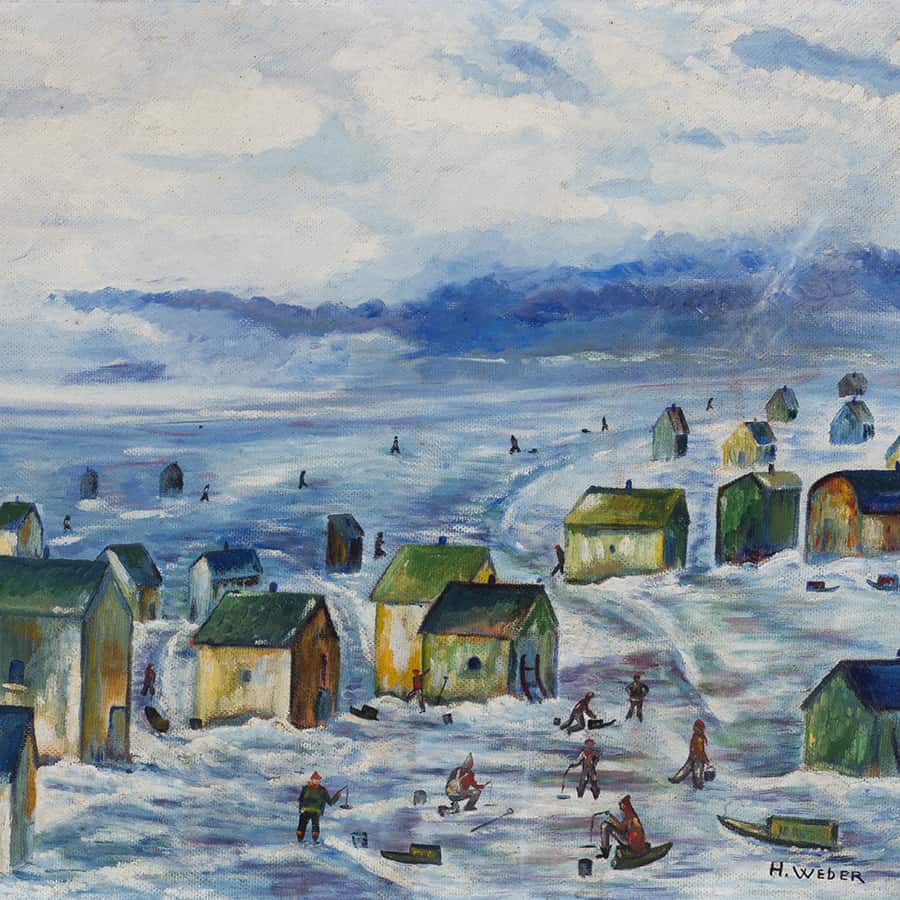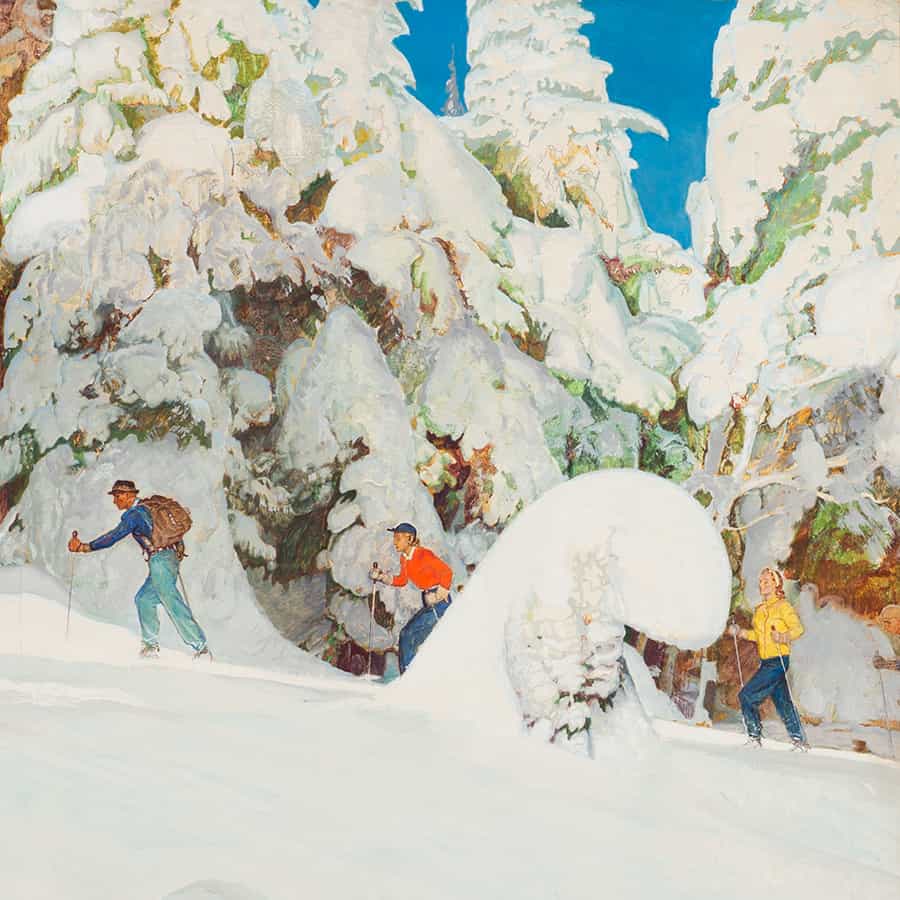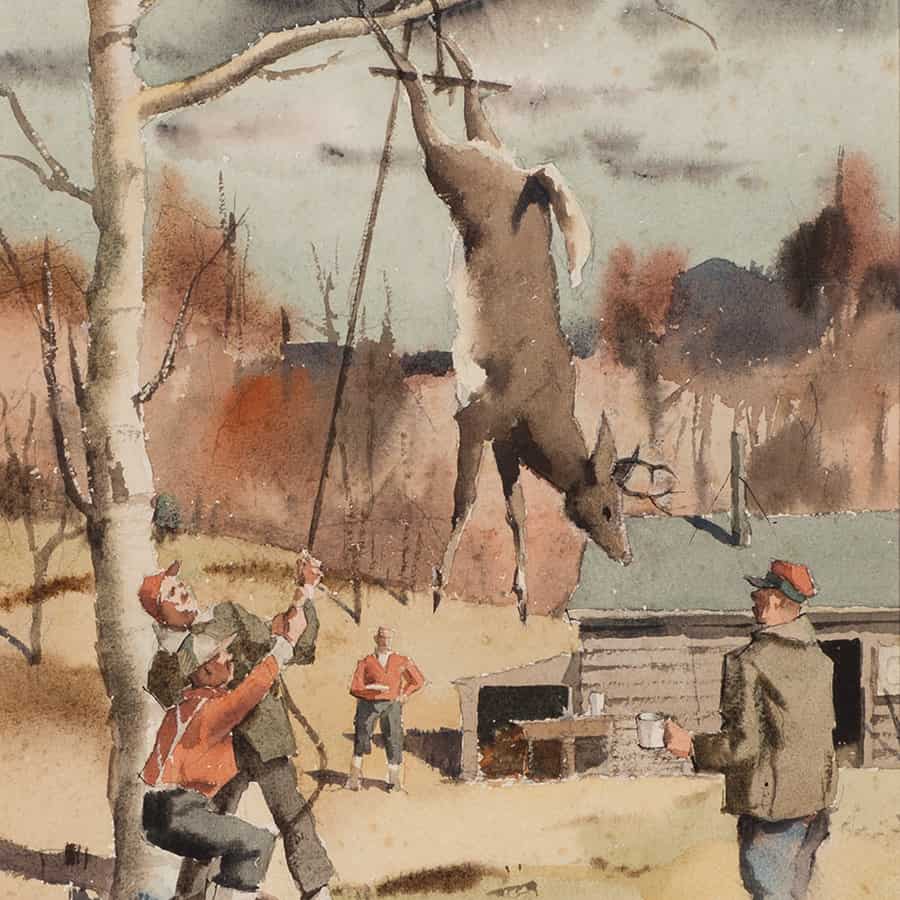Outdoors in Vermont
Life in Vermont naturally means that many of our days are spent out in the open – winter, spring, summer, or fall. Hunting and fishing have always been a way of life in the Green Mountain State. In the second half of the 20th century, everyone all at once seems to have discovered downhill skiing at resorts that almost overnight would become world-famous. Artists who were avid painters of the seashore off Cape Ann or Monhegan Island in summer, came to Vermont and captured scenes of winter sports on canvas.

Ice Fishing, c.1950
Oil on Canvas | 23 ¼ x 26 ½ in.
Henry Weber (1904-1991)
Lyman Orton’s thoughts on this painting are a starting point for a good conversation:
I like to think that this could be people ice fishing on Lake Champlain. I like the greenish tint of the fishing shanties seen on a swirling snowy day. The shanties in the background are set apart, but in the foreground, they are closer together, curved around some holes in the ice where folks are outside fishing. I take that to mean they are sitting there and freezing.
Because of the composition, I immediately associate this scene with people gathered on a village green, such as the one in Weston where I grew up, that gets iced over until springtime. I keep this painting in my office and find myself studying it frequently. It is meaningful to me because it evokes a sense of community.

Bromley Mountain, 1945
Oil on Canvas | 35 x 27 in.
Mead Schaeffer (1898-1980)
Saturday Evening Post cover, February 2, 1946
Mead Schaeffer was born in Freedom Plains, New York, and raised in Springfield, Massachusetts. He studied art at Pratt Institute in Brooklyn, and he would have known Norman Rockwell, another Saturday Evening Post favorite, when they each had studios in New Rochelle, New York. In later years, the two artists were neighbors in Arlington, Vermont. In fact, Schaeffer’s family posed as models for some of Rockwell’s magazine cover illustrations and paintings.
Right out of school, Schaeffer began illustrating reprints of classic works of literature. He went on to do magazine commissions, producing 46 cover illustrations for the Saturday Evening Post. His portfolio included work for McCall’s, Good Housekeeping, Ladies Home Journal, and Cosmopolitan, among others. One source states that Schaeffer made more than 5,000 paintings, traveling throughout the United States to capture scenes of Americans that told authentic stories of the places where they lived and worked. Mead Schaeffer’s work is widely collected. Many museums own his work, such as: the National Museum of American Illustration in Newport, Rhode Island, and the Brandywine River Museum of Art in Chadds Ford, Pennsylvania.
This Illustration, promoting Vermont as a ski destination, appeared on the cover of the Saturday Evening Post, which millions of people would have seen. The train out of Grand Central Station in Manhattan came right to Manchester Depot, barely seven miles from Bromley. No one needed a car to get this far north to ski. Most of the mountains opened during Christmas week, but Bromley owner Fred Pabst (whose family founded Pabst Blue Ribbon beer) opened the mountain early for Thanksgiving.

The Trophy
Watercolor on Paper | 15 x 10 in.
Paul Starrett Sample (1896-1974)
Paul Starett Sample’s career as an artist was largely working as an illustrator, that is, commercial art for which he was commissioned by an agency or publisher. Born in Kentucky, Sample attended Dartmouth College in New Hampshire, and then studied at the Art Students League and the Otis Art Institute, both in Los Angeles.
He returned to Dartmouth as an artist in residence and produced exceptional work. Dartmouth’s Hood Museum showcases his work. He lived on the west side of the Connecticut River in Norwich, Vermont, but kept a studio across the river in Hanover, New Hampshire.
